
A knitting pattern is a set of instructions that guides you in creating a specific knitted item, such as a hat, scarf, or sweater. It outlines the steps you need to follow, the stitches you should use, and the measurements you need to take. Knitting patterns come in various forms, including printed books, downloadable PDFs, and online tutorials.
In addition to the written instructions, a knitting pattern often includes a chart or diagram that visually represents the pattern’s design. This can be especially helpful for complex patterns or those that involve colorwork. Some patterns also provide tips and tricks for successful execution, as well as suggestions for yarn choices and needle sizes.
Knitting patterns are typically created by experienced knitters or designers who have a deep understanding of knitting techniques and stitch patterns. They may be based on traditional patterns that have been handed down through generations, or they may be original designs. Many knitting patterns include variations or customization options, allowing you to add your own personal touch to the finished product.
Using a knitting pattern allows you to create beautiful and intricate knitted items with ease. Whether you are a beginner or an experienced knitter, following a pattern can help you expand your skills and create a finished piece that matches your vision. With countless patterns available, you can find options for every skill level and style preference, making knitting an enjoyable and creative craft for people of all ages.
Definition of a Knitting Pattern
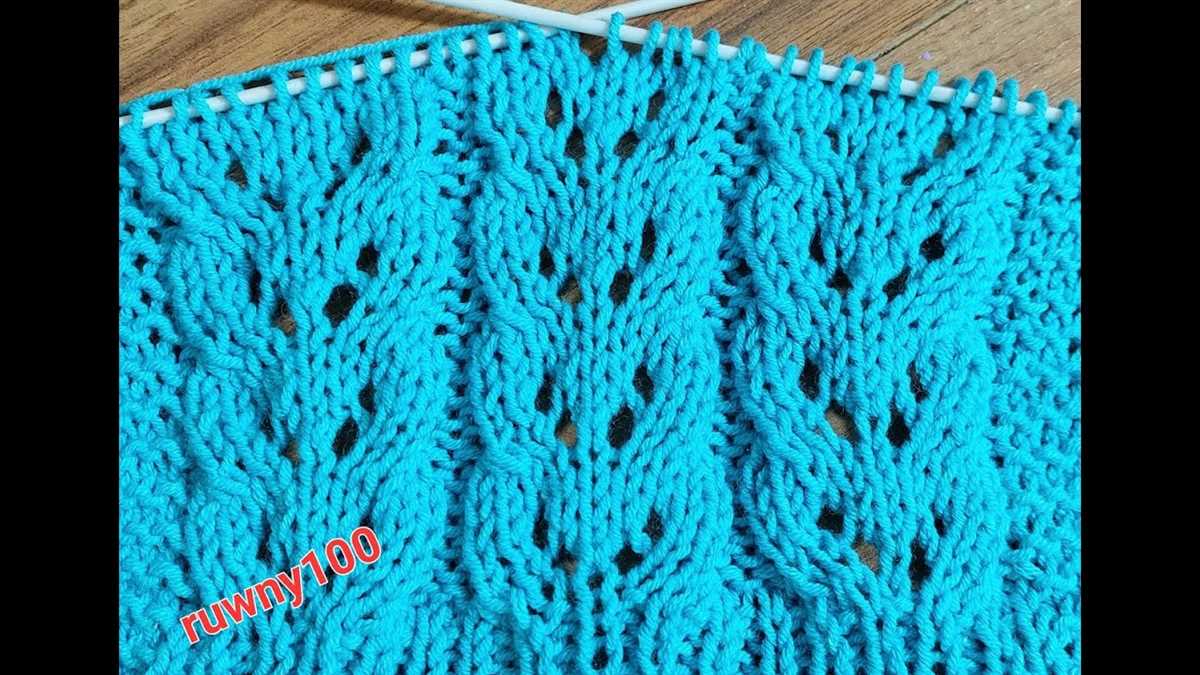
A knitting pattern is a set of instructions that guides knitters in creating a specific item or design using yarn and knitting needles. It provides step-by-step directions and often includes charts, diagrams, and abbreviations to make the knitting process easier to understand and follow.
Key Components:
- Stitch Instructions: Knitting patterns usually consist of stitch instructions, which outline the different stitches needed to create the pattern. These instructions may include basic knit and purl stitches, as well as more complex stitches like cables, lace, and colorwork.
- Row-by-Row Directions: Knitting patterns typically provide row-by-row directions, detailing what to do on each row of the knitting project. This includes instructions on how many stitches to cast on, how to shape the item, and when to switch stitches or colors.
- Charts and Diagrams: Many knitting patterns include charts and diagrams to visually represent the stitch patterns and designs. These charts can be especially helpful for complex patterns and can make it easier to understand the overall structure of the knitted item.
- Abbreviations and Glossaries: Knitting patterns often use abbreviations to save space and make the instructions more concise. These abbreviations are usually explained in a glossary or key within the pattern. Understanding these abbreviations is essential for following the pattern correctly.
- Yarn and Needle Requirements: Knitting patterns also provide information on the type and amount of yarn needed for the project, as well as the recommended needle size. This ensures that knitters choose the appropriate materials to achieve the desired gauge and size of the finished item.
Overall, a knitting pattern acts as a guide for knitters, providing them with the necessary instructions and information to create a specific knitted item. It allows for creativity and customization while maintaining a structure and design. Following a knitting pattern can be both challenging and rewarding, resulting in beautifully handmade garments, accessories, and home decor.
Importance of Knitting Patterns
In the world of knitting, patterns play a crucial role. They provide a guide for knitters to create beautiful and intricate designs with their yarn and needles. A knitting pattern is a set of instructions that details the steps and techniques needed to complete a specific project. It includes information on the type of yarn, the size of needles, and the stitch patterns to be used. Without a knitting pattern, it can be challenging to achieve the desired result and create a cohesive and well-finished piece.
Accuracy and Consistency: Knitting patterns ensure accuracy and consistency in the creation of knitted items. They provide systematic instructions that help knitters keep track of their stitches and rows, ensuring that the project maintains its intended shape and size. By following a knitting pattern, knitters can create items that match the pattern’s measurements and design details.
Guidance and Inspiration:
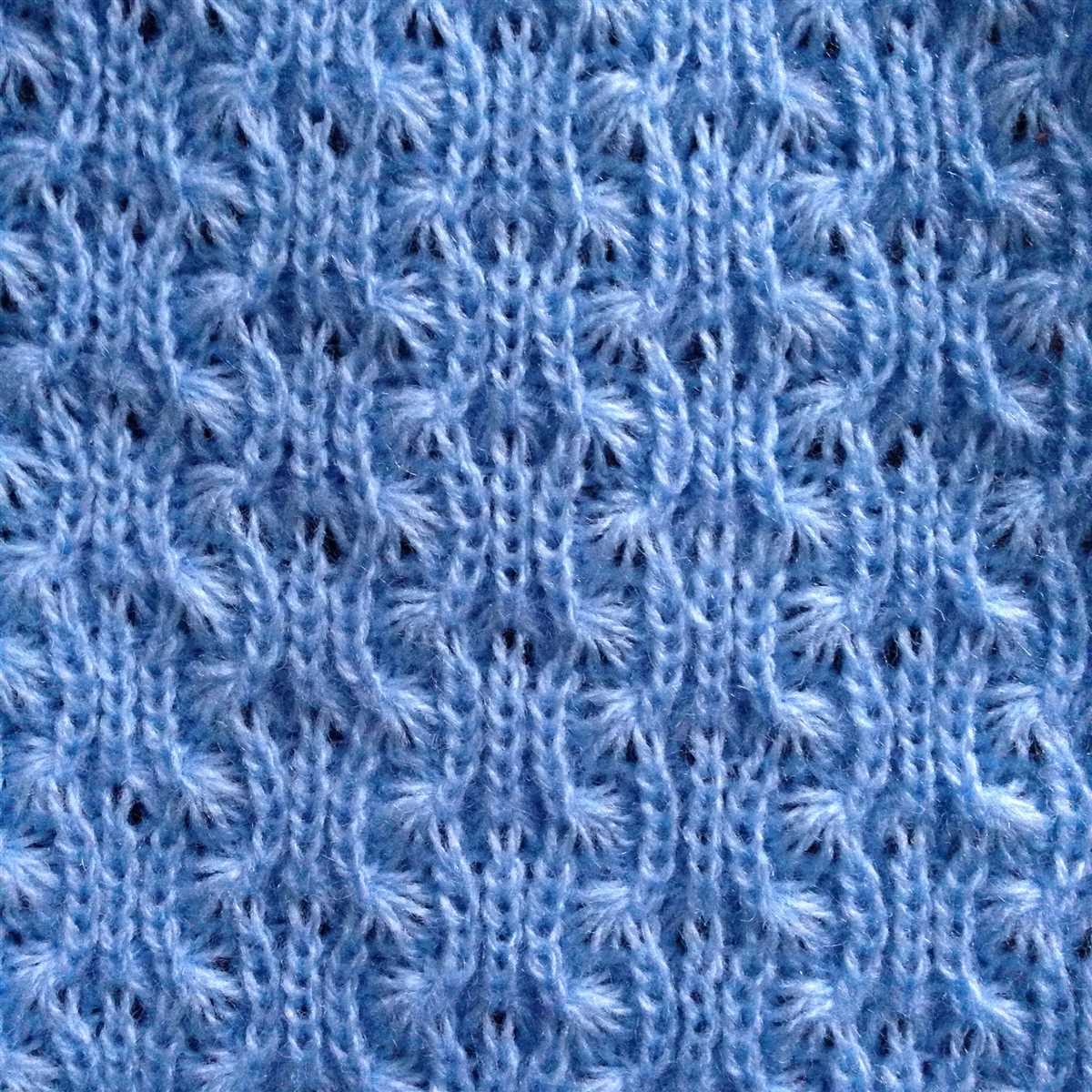
A knitting pattern serves as a guiding tool, especially for beginners. It helps them understand and learn various knitting techniques step by step. With each project, knitters can explore new stitches, patterns, and construction methods, expanding their skills and knowledge. Knitting patterns also provide inspiration by showcasing finished projects and suggesting different color combinations or variations.
Repeatability and Sharing: Knitting patterns allow for repeatability and sharing of designs. Once a pattern is created, it can be used multiple times to recreate the same item. Knitters can share their patterns with others, allowing them to recreate the same project and enjoy the satisfaction of knitting something beautiful.
In conclusion, knitting patterns are essential tools for knitters. They not only provide the necessary instructions for creating knitted items but also offer guidance, inspiration, repeatability, and sharing possibilities. Whether you are a beginner or an experienced knitter, having access to high-quality knitting patterns will greatly enhance your knitting journey.
History of Knitting Patterns

Knitting patterns have a long and rich history that dates back centuries. The earliest known knitting patterns can be traced back to the Middle Ages, where they were mostly used by skilled craftsmen and women to create intricate knitted garments. These patterns were often passed down through generations, with each family adding their own unique touch to the designs.
During the Renaissance period, knitting patterns became more widely available as the craft gained popularity among the upper classes. Pattern books were published, featuring detailed instructions and diagrams that allowed people to recreate the fashionable designs of the time. These pattern books were highly sought after and considered a valuable resource.
Industrial Revolution and the Rise of Mass Production
The Industrial Revolution in the 18th and 19th centuries had a significant impact on the production and availability of knitting patterns. With the introduction of knitting machines, the process of creating knitted fabrics became faster and more efficient. This led to an increase in the demand for knitting patterns, as more people were able to knit their own garments.
With the advent of mass production, knitting patterns became even more accessible to the general public. They were often included in women’s magazines and newspapers, allowing women to be updated with the latest trends and fashions. Knitting patterns from this period often featured simple designs that could be easily replicated by the average knitter.
Today, knitting patterns have evolved to cater to a wide range of skill levels and design preferences. They are available in various formats, from printed books to downloadable PDFs, and can be found online or in local yarn stores. Whether you’re a beginner looking to learn the basics or an experienced knitter looking for a new challenge, there is a knitting pattern out there for everyone.
Different Types of Knitting Patterns
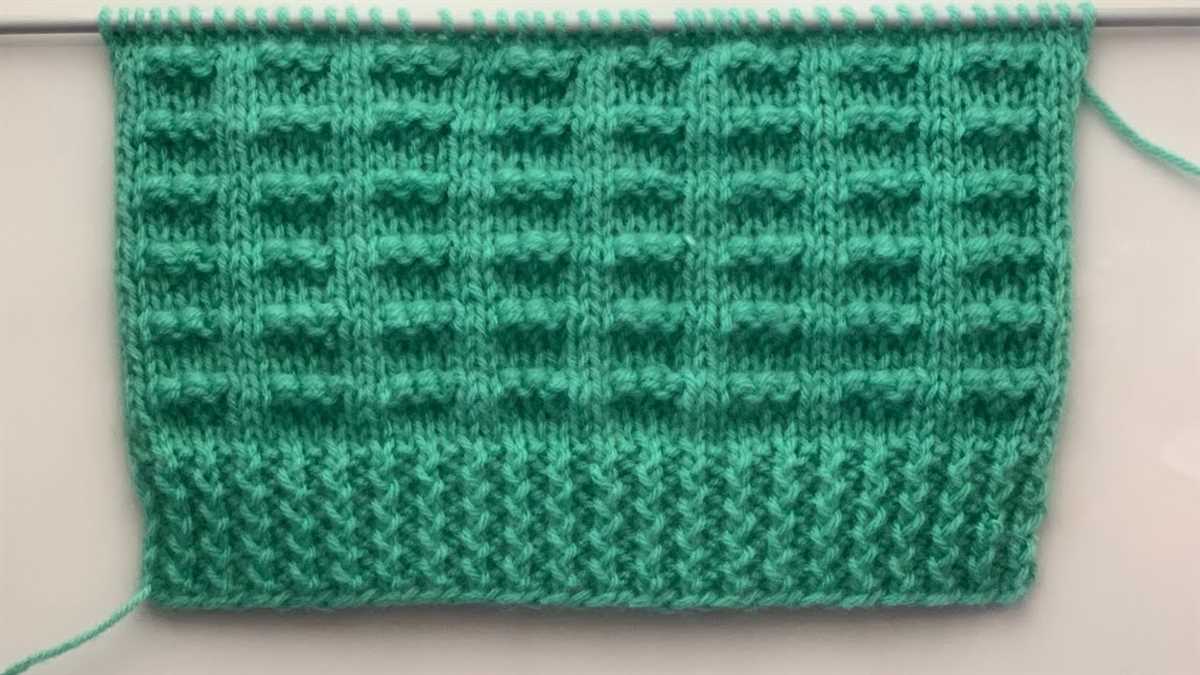
Knitting patterns are instructions that guide knitters on how to create a specific project, such as a sweater, hat, or scarf. There are various types of knitting patterns available, each with its own unique characteristics and techniques.
1. Basic Stitch Patterns
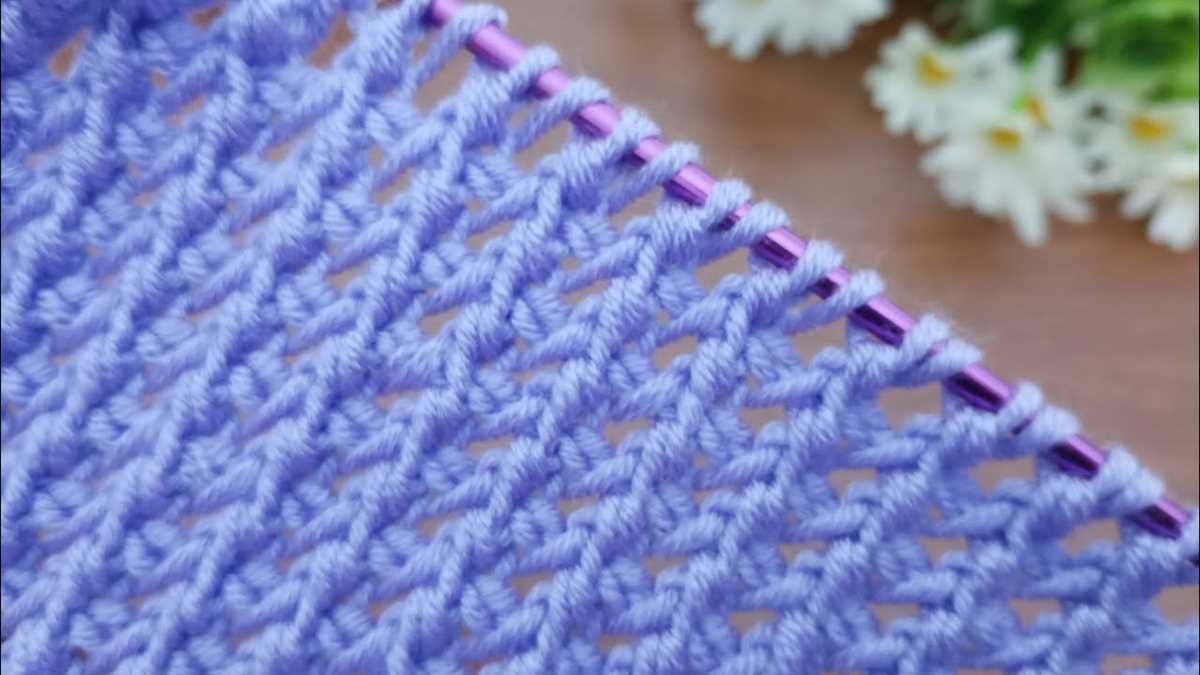
Basic stitch patterns are the foundation of knitting. They include simple stitches, such as the knit stitch and the purl stitch, and their combinations. These patterns create the basic texture or design in a knitted fabric. Basic stitch patterns are great for beginners as they are easy to follow and allow knitters to practice and build their skills.
2. Cable Patterns
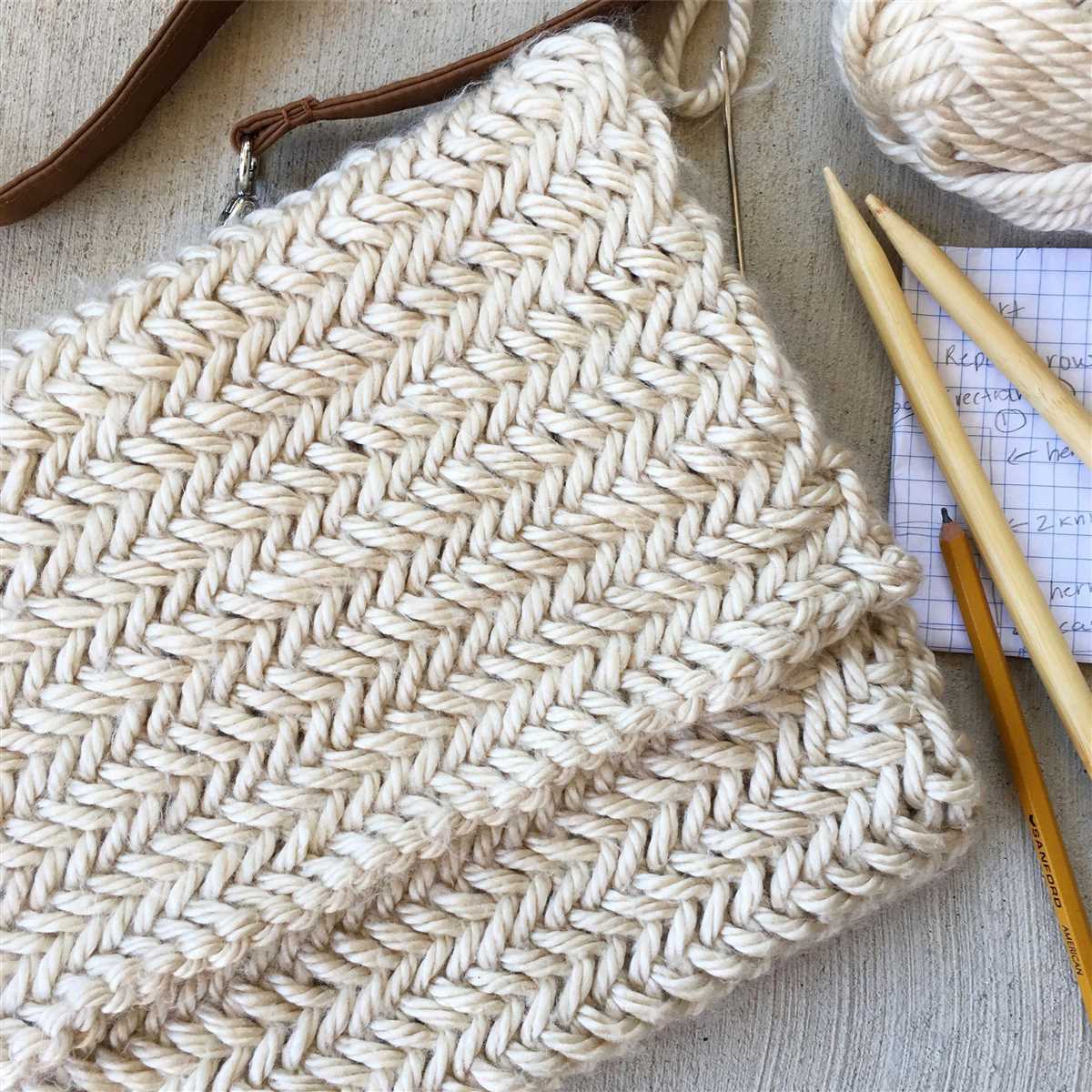
Cable patterns are created by twisting the stitches over each other, forming intricate cable-like designs. This type of pattern adds depth and texture to knitted garments. Cable patterns can vary in complexity, from simple one-over-one cables to more intricate cable designs with multiple crossings. Knitting cables requires following a specific chart or written instructions, making them a bit more challenging.
3. Lace Patterns

Lace patterns are delicate and elegant, usually featuring a combination of yarn-overs and decreases to create decorative holes and intricate designs. These patterns are often used in shawls, scarves, and other lightweight garments. Knitting lace patterns requires attention to detail and following lace charts or written instructions, but the end result is a beautiful, airy fabric.
4. Fair Isle Patterns
Fair Isle patterns, also known as stranded knitting, involve using two or more colors of yarn in a single row to create colorful and intricate designs. This technique originated in the Fair Isle region of Scotland and is often used in traditional knitwear. Knitting Fair Isle patterns requires carrying the unused yarn behind the work and following a color chart or written instructions.
5. Intarsia Patterns

Intarsia patterns involve knitting blocks of color separately, using bobbins or small balls of yarn, to create larger designs or images on knitted fabric. This technique is commonly used in colorwork projects, such as sweaters or blankets. Knitting intarsia patterns requires managing multiple yarn strands and following a chart or written instructions to create the desired design.
These are just a few examples of the different types of knitting patterns available. Whether you’re a beginner or an experienced knitter, exploring different patterns allows you to expand your skills and create unique and beautiful knitted projects.
Written Knitting Patterns
In the world of knitting, written patterns are an essential tool for knitters of all skill levels. A knitting pattern is a set of instructions that guide you through the process of creating a knitted item, such as a sweater, hat, or scarf. These patterns include detailed step-by-step directions, as well as measurements, stitch counts, and other important information. Written patterns come in a variety of formats, but they all serve the same purpose: to help you successfully create your desired knitted project.
Written knitting patterns are typically written in a specific format that includes abbreviations and symbols to represent different knitting techniques and stitches. For example, “k” may stand for “knit,” “p” may stand for “purl,” and “yo” may stand for “yarn over.” These abbreviations allow for a concise and standardized way of communicating knitting instructions, making patterns easier to read and understand.
Structure of a Written Knitting Pattern
A written knitting pattern typically begins with a list of materials needed for the project, such as the type and amount of yarn required, the recommended needle size, and any additional supplies. The pattern then moves on to the instructions for creating the project, providing row-by-row or round-by-round directions. Stitch counts and measurements are often included throughout the pattern to ensure accuracy and proper sizing.
Troubleshooting and Customization
Written knitting patterns also often include troubleshooting tips and suggestions for making modifications to the design. This allows knitters to customize the pattern to their own preferences and adjust it to fit their individual style and needs. Additionally, many patterns provide guidance on how to fix common mistakes or address issues that may arise during the knitting process.
Sharing and Collaborating
Written knitting patterns serve not only as a guide for individual knitters but also as a way to share and collaborate within the knitting community. Knitters can exchange patterns, make variations, and even design their own patterns based on existing ones. This sharing of knowledge and creativity helps to foster and strengthen the knitting community as a whole.
Charted Knitting Patterns
A charted knitting pattern is a visual representation of a knitting pattern, typically shown as a grid of squares or symbols. Each square or symbol represents a specific stitch or action in the knitting process. Charted knitting patterns are often used for more complex or intricate designs, as they provide a clear and concise way to visualize the pattern.
Charted knitting patterns can be found in knitting books, magazines, and online resources. They are commonly used for various types of projects, such as sweaters, shawls, socks, and accessories. Knitters can choose to follow the charted pattern instead of written instructions, or they can use both methods together.
One of the benefits of using a charted knitting pattern is that it allows for easier pattern recognition and memorization. The visual representation of the stitches helps the knitter see the pattern repeat and anticipate what comes next. This can be especially helpful when working on complex stitch patterns or colorwork.
Charted knitting patterns typically include symbols or abbreviations that represent different types of stitches. These symbols can vary depending on the designer or publication, so it’s important to refer to the pattern key or legend for clarification. Some common symbols used in charted knitting patterns include circles for knit stitches, squares for purl stitches, and diagonal lines for decreases or increases.
When following a charted knitting pattern, it’s important to pay attention to the row and stitch count, as well as any additional instructions or notes provided. Working with a row counter or highlighter can help keep track of progress and prevent mistakes. With practice and patience, knitters can become proficient at reading and working from charted knitting patterns, opening up a world of creative possibilities.
How to Read a Knitting Pattern
Knitting patterns are like a map that guides you through creating a knitted item. Each pattern is written in a specific format, and understanding how to read a knitting pattern is essential for successfully completing your project.
Here are a few key steps to help you read a knitting pattern:
1. Start with the Materials List
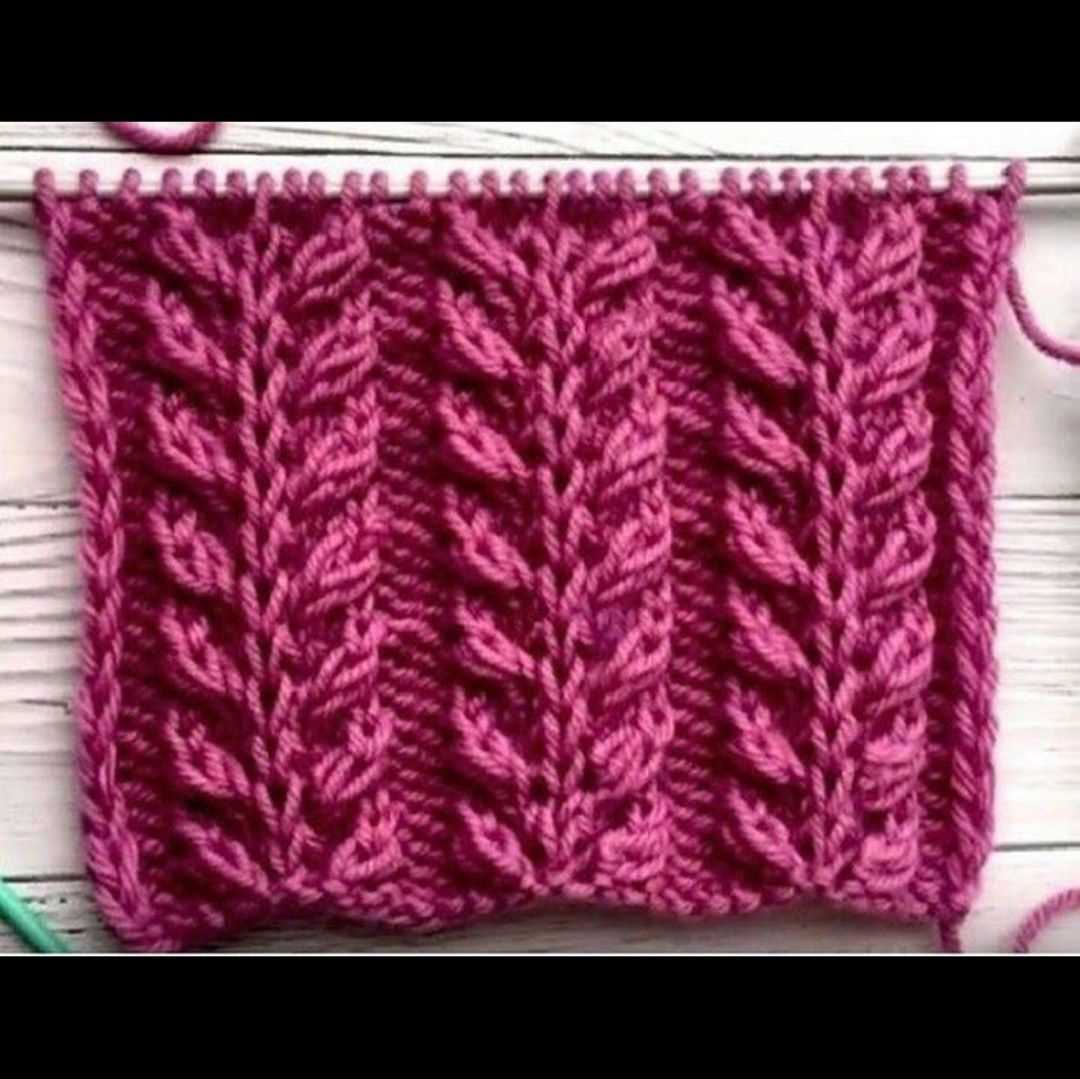
The materials list is usually at the beginning of the pattern and provides information on the type and amount of yarn, needle size, and any additional supplies needed. Make sure you have all the necessary materials before you begin.
2. Understand the Abbreviations

Most knitting patterns use abbreviations to save space and make the instructions easier to read. Familiarize yourself with the common abbreviations, such as K for knit and P for purl. The pattern’s abbreviations key will explain what each abbreviation means.
3. Read the Stitch Instructions
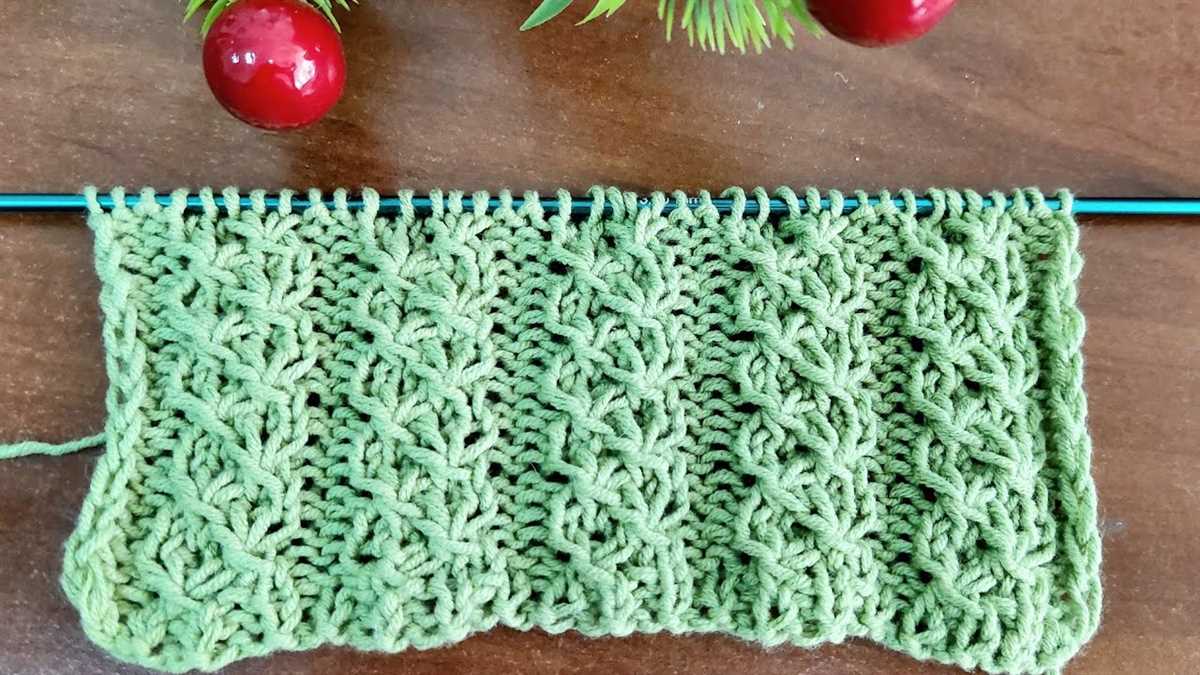
The stitch instructions section is where you will find the steps needed to create the pattern’s design. It will tell you what stitches to make, how many times to repeat the pattern, and any special techniques required.
4. Follow the Pattern Repeat
Many knitting patterns have a repeated pattern section. This section will tell you how to repeat a specific set of stitches to create the desired design. It will typically indicate how many times to repeat the pattern and where to begin and end each repeat.
5. Check the Schematic and Measurements
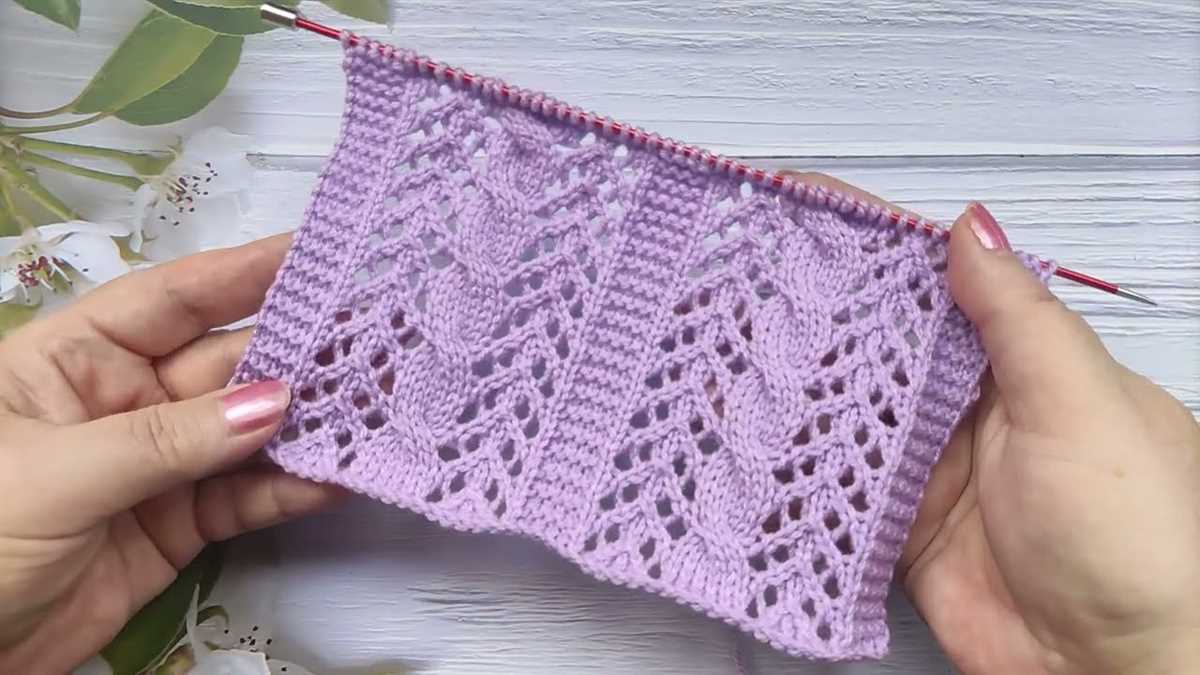
Some patterns include a schematic, which is a visual representation of the finished item’s measurements and shape. It can help you visualize how the pieces fit together and guide you in achieving the correct measurements.
- 6. Keep Track of Your Progress
As you work through the pattern, it’s helpful to keep track of your progress. You can use stitch markers or a row counter to mark your place in the pattern and ensure you don’t lose track.
By following these steps and familiarizing yourself with the specific format of knitting patterns, you’ll be able to read and understand any knitting pattern that comes your way. Happy knitting!
Creating a Knitting Pattern
Creating a knitting pattern is an exciting and creative process that allows knitters to bring their unique designs to life. Whether you are a novice or an experienced knitter, developing your own pattern can be a rewarding and fulfilling experience.
1. Inspiration: The first step in creating a knitting pattern is finding inspiration. This can come from anything – a beautiful sunset, a piece of artwork, or even a texture you notice in nature. Once you have an idea or theme in mind, you can start sketching out your design and thinking about the stitches and techniques you want to incorporate.
2. Yarn and Gauge: Before you start knitting, it is important to choose the right yarn for your project. Consider the fiber content, weight, and color of the yarn, as they will greatly impact the final look and feel of the finished piece. Additionally, you will need to determine the gauge, which refers to the number of stitches and rows per inch. This will ensure that your pattern turns out the correct size and fit.
3. Swatching: Swatching is a crucial step in creating a knitting pattern. It involves knitting a small sample of your chosen stitch pattern to determine if you have the correct gauge. This allows you to make any necessary adjustments before starting your project, ensuring that it turns out the way you envisioned.
4. Writing the Pattern: Once you have finalized your design and made any necessary adjustments, it’s time to write the pattern. Begin by listing the materials needed, including the yarn, needles, and any additional notions. Then, write out the instructions for each section, including cast-on, stitch patterns, shaping, and finishing techniques. Be clear and concise, using abbreviations and standardized terms that are familiar to knitters.
5. Test Knitting: After writing the pattern, it is important to have others test knit it to ensure its accuracy and clarity. They can provide valuable feedback and catch any errors or confusing instructions before the pattern is published or shared. This step is especially important if you plan on selling your pattern, as it will help build trust with your customers.
6. Sharing and Publishing: Once your pattern has been thoroughly tested and refined, it’s time to share and publish it. Consider self-publishing on platforms like Ravelry or Etsy, or submitting it to knitting magazines or websites. You can also share your pattern with friends and fellow knitters to get their feedback and showcase your design.
In conclusion, creating a knitting pattern requires inspiration, careful planning, and attention to detail. It is a process that allows knitters to express their creativity and share their unique designs with others. By following these steps, you can turn your knitting ideas into beautiful patterns that others can enjoy and knit themselves.
Knitting Pattern Abbreviations and Notations
When reading a knitting pattern, you may come across various abbreviations and notations. These shorthand terms are used to save space and make the instructions easier to read. It is important to familiarize yourself with these abbreviations as they are commonly used in knitting patterns.
Common Abbreviations:
- K: Knit
- P: Purl
- YO: Yarn Over
- Ssk: Slip, Slip, Knit
- K2tog: Knit Two Together
- P2tog: Purl Two Together
- St(s): Stitch(es)
- Rep: Repeat
- RS: Right Side
- WS: Wrong Side
These are just a few examples of the many abbreviations you may encounter. It is recommended to keep a knitting abbreviations cheat sheet handy when working on new patterns.
Notations:
In addition to abbreviations, knitting patterns may also include notations to indicate specific actions or stitches. These notations can provide additional information to clarify the pattern instructions.
- [ ]: Indicates a set of stitches to be repeated
- ( ): Contains instructions within the parentheses
- * Marks a point where the pattern is repeated
- + Indicates that a set of stitches is repeated within the same row
Understanding and recognizing these notations will help you follow the pattern more easily and prevent any confusion.
Commonly Used Knitting Abbreviations
When reading a knitting pattern, you may come across various abbreviations that can seem confusing at first. However, these commonly used knitting abbreviations are essential in understanding the instructions and achieving the desired outcome. Below are some of the most frequently encountered knitting abbreviations and their meanings:
1. k – knit
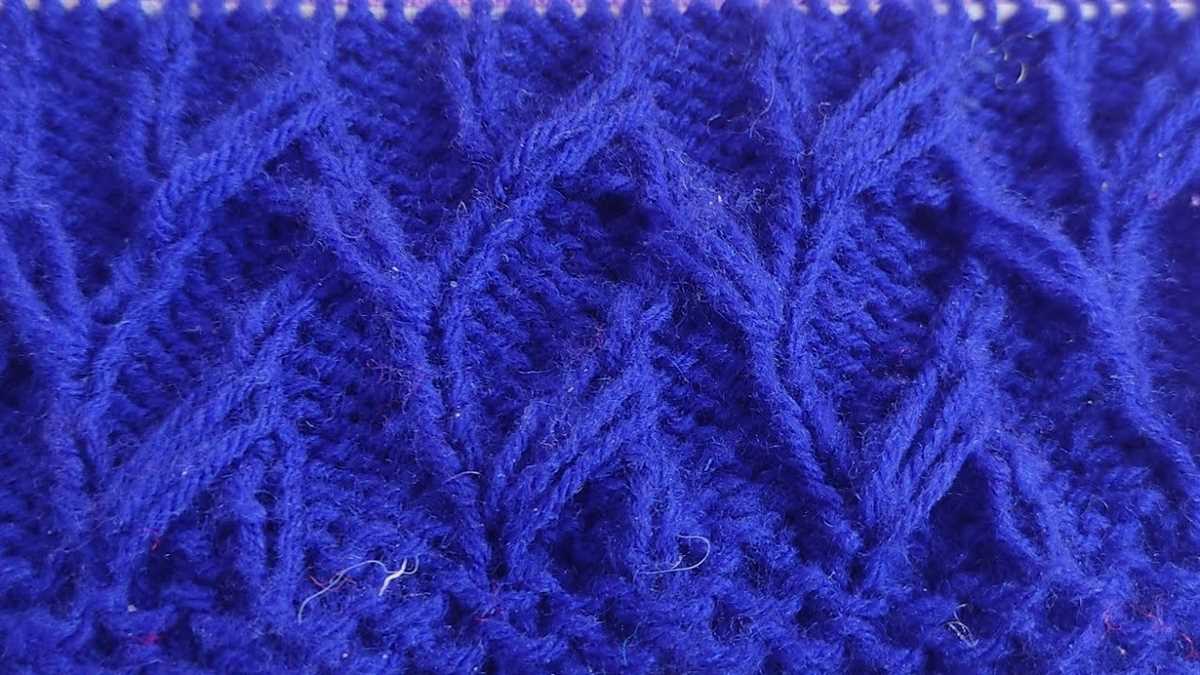
This abbreviation indicates that you should insert the needle through the front of the stitch, wrap the yarn around the needle, and pull it back through to create a new stitch.
2. p – purl
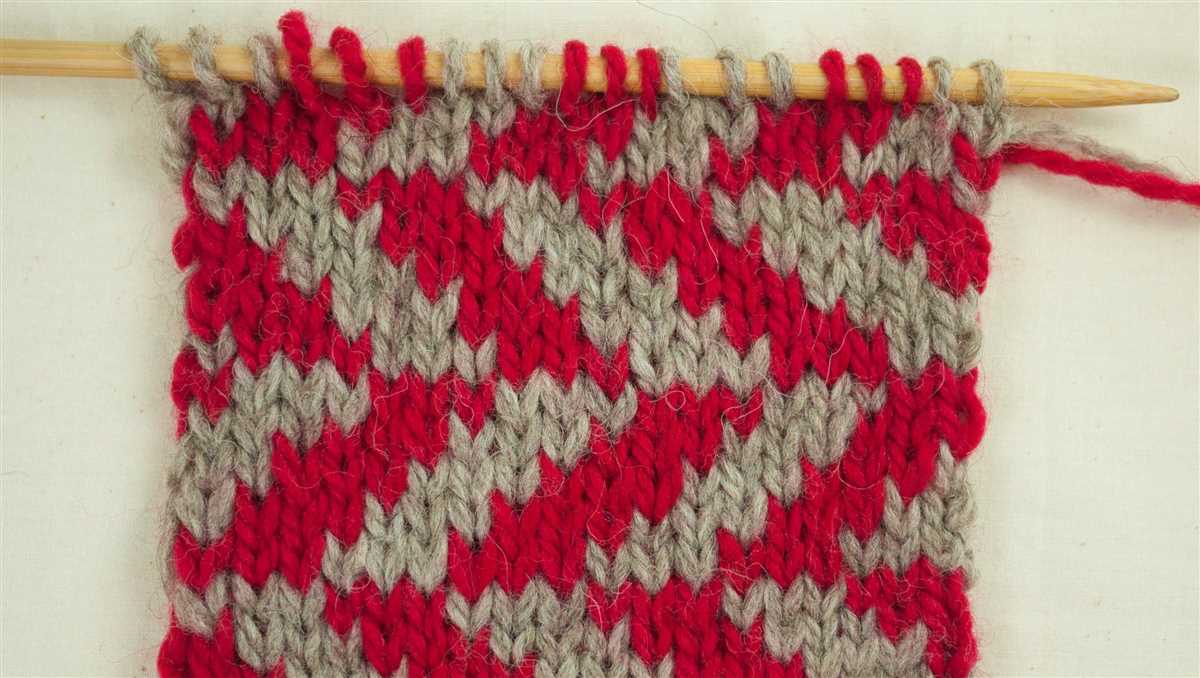
The abbreviation for purl instructs you to insert the needle through the front of the stitch, but instead of wrapping the yarn around, you should bring it in front of the work and then pull it through the stitch, creating a new stitch.
3. st(s) – stitch(es)
This abbreviation is used to indicate the number of stitches you should have on your needle. For example, “k6” means to knit 6 stitches, while “p3” means to purl 3 stitches.
4. yo – yarn over
A yarn over is an increase that creates an eyelet in your knitting. To execute a yarn over, simply bring the yarn over the right-hand needle from front to back.
5. k2tog – knit two together
This abbreviation means to knit the next two stitches together as one. Insert the needle through the front of the next two stitches and knit them together as if they were a single stitch.
These are just a few examples of commonly used knitting abbreviations. Familiarizing yourself with these abbreviations will help you decipher knitting patterns more easily and allow you to create beautiful and intricate knitted projects.
Knitting Notations and Symbols
When following a knitting pattern, it is important to understand the various notations and symbols used. These notations provide clear instructions on how to complete each stitch and create the desired design. By familiarizing yourself with these notations, you can easily read and understand any knitting pattern.
Basic Stitch Symbols: Most knitting patterns use a set of standard stitch symbols to indicate different types of stitches. For example, a plain knit stitch is often represented by a symbol that looks like a lowercase “v”. Similarly, a purl stitch is usually indicated by a symbol that looks like an upside-down lowercase “u”. These symbols make it easier to read knitting patterns and ensure your stitches are executed correctly.
Pattern Repeats: Knitting patterns often include repeat sections, where a set of stitches is repeated multiple times to create a specific pattern or design. To indicate a repeat, the pattern will typically use brackets or asterisks. For example, “[k2, p2] rep” means that you should knit 2 stitches, purl 2 stitches, and then repeat this sequence until the end of the row. This notation allows you to easily understand and execute the repeated sections of the pattern.
Special Instructions: In addition to basic stitch symbols and pattern repeats, knitting patterns may also include special instructions for specific techniques or stitches. These instructions can include abbreviations and explanations that may be specific to the pattern being used. It is important to carefully read and understand these special instructions to ensure the successful completion of the pattern.
Charts and Graphs: Some knitting patterns use charts or graphs to provide a visual representation of the pattern. These charts often use symbols and colors to represent different stitches and can be especially helpful for complex patterns. By following the symbols and directions on the chart, you can easily see how the stitches should be worked and create an accurate design.
In conclusion, understanding knitting notations and symbols is essential for successfully following and executing knitting patterns. By learning to interpret these symbols and instructions, you can confidently take on any knitting project and create beautiful and intricate designs.
Tips for Following Knitting Patterns

Knitting patterns can be a valuable resource for both beginners and experienced knitters. They provide detailed instructions on how to create a variety of stitches and designs, allowing you to create beautiful and unique projects. However, following knitting patterns can sometimes be challenging, especially for those who are new to the craft. To help you navigate through the process, here are some tips for successfully following knitting patterns.
1. Read the Pattern Carefully
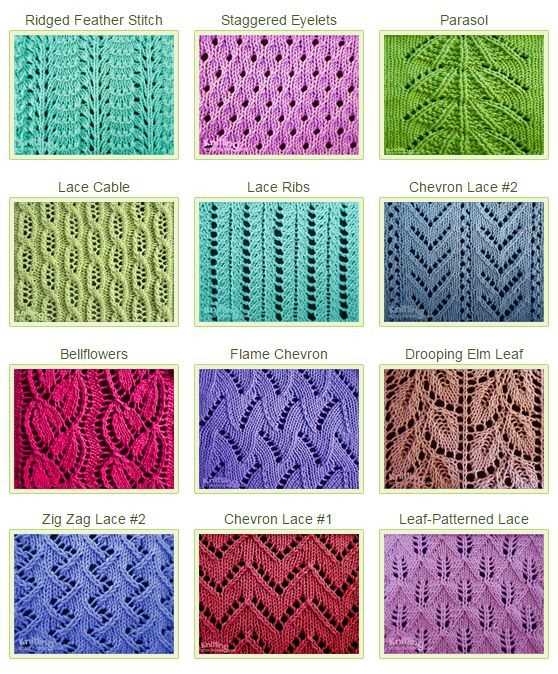
Before you start knitting, take the time to thoroughly read through the entire pattern. Pay attention to any special instructions, stitch counts, and specific techniques that may be required. By familiarizing yourself with the pattern beforehand, you can avoid making mistakes or encountering surprises later on.
2. Take Accurate Measurements
Proper measurements are crucial when it comes to knitting garments. Make sure to take accurate measurements of your body or the person you are knitting for, and compare them to the size chart provided in the pattern. This will ensure that the finished project fits as intended.
3. Use the Right Yarn and Needles
The type of yarn and needles you use can greatly affect the outcome of your knitting project. Always follow the recommendations provided in the pattern regarding yarn weight, fiber content, and needle size. Using the right materials will help you achieve the correct gauge and ensure that the final product looks and feels as intended.
4. Keep Track of Rows and Stitches
Many knitting patterns require you to keep track of your rows and stitches, especially when working on more complex designs. To avoid confusion, use stitch markers or a row counter to keep track of where you are in the pattern. This will help you maintain consistency and prevent mistakes.
5. Practice Patience and Perseverance

Knitting can be a slow and intricate process, especially when working on intricate patterns or larger projects. It’s important to practice patience and persevere, especially if you encounter challenges or make mistakes along the way. Remember that knitting is a skill that improves with practice, and each project is an opportunity to learn and grow as a knitter.
In conclusion
Following knitting patterns can be an enjoyable and rewarding experience. By carefully reading and understanding the instructions, accurately measuring, using the right materials, keeping track of rows and stitches, and practicing patience, you can successfully bring knitting patterns to life and create beautiful projects.
Resources for Knitting Patterns
If you’re looking to find knitting patterns, there are a variety of resources available both online and offline. Whether you’re a beginner or an experienced knitter, you’re sure to find something that suits your tastes and skill level.
Here are some popular resources for knitting patterns:
1. Knitting Books
Knitting books are a great way to expand your pattern collection. They often contain a wide range of patterns for different skill levels and styles. Some popular knitting book publishers include Interweave, Penguin Random House, and Storey Publishing.
2. Knitting Magazines
Knitting magazines are a great source of inspiration and patterns. They usually feature patterns for different seasons and trends. Some popular knitting magazines include Vogue Knitting, Knitscene, and Simply Knitting.
3. Online Knitting Communities
There are many online knitting communities where knitters can share and find patterns. Websites such as Ravelry, LoveCrafts, and Knitting Pattern Central provide a wide range of patterns, from beginner to advanced. These websites also often have forums and groups where knitters can connect and exchange ideas.
4. Knitting Blogs
Many knitters, both beginners and experts, share their patterns and knitting experiences on blogs. These blogs often include detailed instructions and helpful tips. Some popular knitting blogs include Purl Soho, Ysolda Teague, and Tin Can Knits.
5. Local Yarn Shops
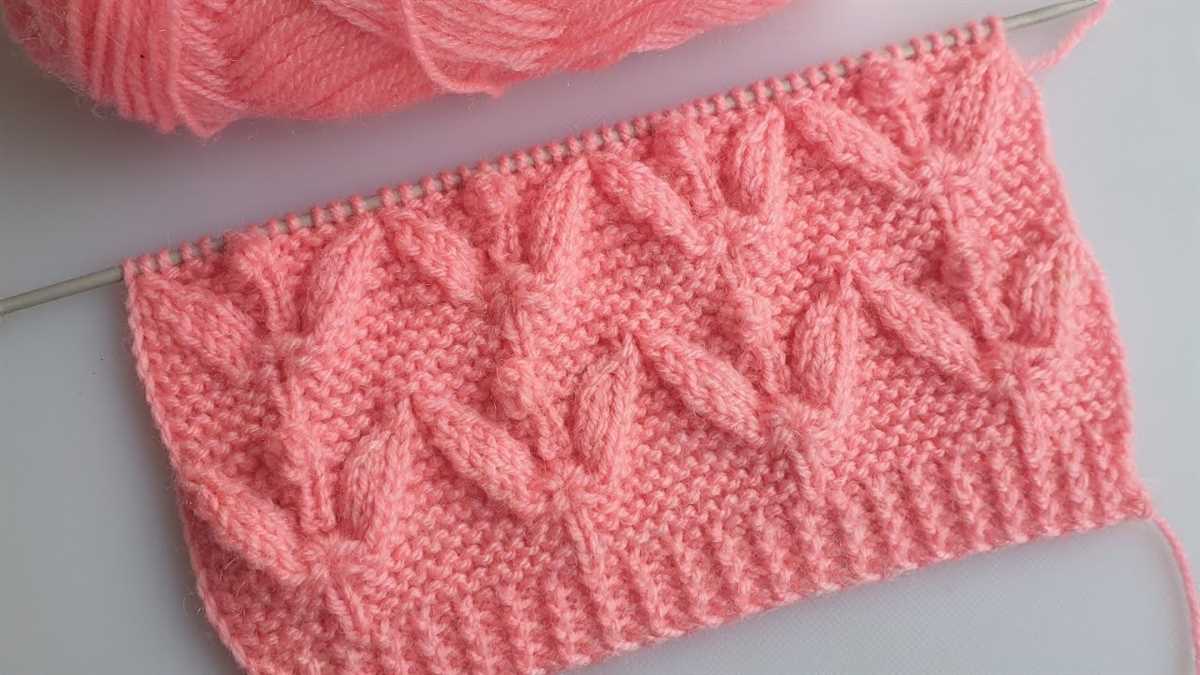
Your local yarn shop can be a great resource for knitting patterns. Many shops offer pattern books and individual patterns for purchase. They may also host knitting classes or knitting groups where you can learn new patterns and techniques.
With so many resources available, you’re sure to find the perfect knitting pattern for your next project. Whether you prefer books, magazines, online communities, blogs, or local yarn shops, you can explore different sources and find inspiration for your knitting journey. Happy knitting!